- This event has passed.
AAAR 2022 – American Association for Aerosol Research
October 3, 2022 - October 7, 2022
Experts and stakeholders in aerosol science of infectious diseases and indoor air quality will gather in North Carolina this October.
The 40th AAAR Annual Conference of the American Association for Aerosol Research will take place 3-7 October 2022 in Raleigh, North Carolina.
Special Symposia designed to bridge multiple areas and promote cross-disciplinary interaction will be held on the following topics:
- Biomass Combustion: outdoor/indoor transport and indoor air quality
- Aerosol Physical Chemistry and Microphysics
- Aerosol Science of Infectious Diseases: What we’ve learned and still need to know about transmission, prevention, and the one health concept
- Aerosol sources and constituents of emerging importance and their impacts across spatial scales
Highlighted topics and sessions include:
- Optimization of a Wetted Wall Cyclone for Pathogen Collection
- Impact of Chemically Reductive Trace Air Contaminants on Non-thermal Plasma Inactivation of Airborne Viruses
- Modeling of the Atmospheric Process of Cyanobacterial Toxins in Algal Aerosol
- Assessment of the Effectiveness of a Hygroscopic Coating on the Conservation of MS2 Viability during Aerosol Sampling with MCE Filters
- Continuous Fluorescent Bioaerosol Measurements for 18 Months Combined with Filter Sampling Validation
- Characterization of Aerosol in Poultry Farms with Low-Cost Sensors and Research-Grade Instruments
- Comparison of Airborne Bacterial Diversity Collected by Passive and Active Air Sampling
- Performance of Low-cost PurpleAir Sensor in Monitoring Indoor Aerosols
- Influence of UV Irradiation and Environmental Factors on the Size-Dependent Survivability of Bioaerosols
- What is the Best Cleaning Method the Public Can Use to Remove Bacillus Spores from Indoor Surfaces?
- Antibiotic Resistance Genes in Air Near Farms
- Fate of Inhaled Particles in the Lungs of Ferrets
- Performance of N95 Filtering Facepiece Respirators Used with Skin Protectants: Manikin-based Study
- Seasonal Impacts on Microbiome Diversity and Antibiotic Resistance Patterns in Aerosolized Bacteria in a Dairy Facility
- Agricultural Contributions to Fluorescent Bioaerosol Measured by the WIBS at the AGINSGP Campaign at the Southern Great Plains Site
- Qualitative Analysis of Bioaerosol Chemical Composition and Shift by Means of 1HNMR
- U.S. EPA Progress on Developing Performance Testing Protocols and Targets for Particulate Matter Air Sensors
- Toxicological Impact of Secondary Organic Aerosol Compounds in Air-Liquid-Interface Exposed Lung Cell Models
- Trapped in the Inversion Layer: Composition and Morphology of Single Aerosol Particles in the Urban Arctic Winter
- Exploring the Chemical Evolution of Aerosol Particle Composition and Physical Properties using Single Particle Levitation
- Global vs. Local Dose Deliveries of Airborne Particles through Dosimetric Aerosol in Vitro Inhalation Device (DAVID)
- Ultrafine Aerosol Particle Formation and Impacts in Houston during TRACER
- Effects of Wet Removal on Aerosol Mass and Chemical Composition
- Investigating the Fate of wildfire Smoke in Homes
- Impact of Do-It-Yourself and Commercial Air Cleaner Use on Residential PM2.5 in a Smoke-Impacted Community
- Developing National Exposure Models for Source-Specific Primary Particulate Matter Concentrations Using Aerosol Mass Spectrometry Data
- The Peroxy Radical Fates during Heterogeneous Oxidation of Organic Aerosols
- Comparison of Organic Aerosol Composition and Source Distributions across Different Urban Microenvironments
- Characterization of VOC and Particle Emissions in Exhaled Air during Vaping
- Personal Exposure of Domestic Dogs and Their Owners to Airborne Per- and Polyfluoroalkyl Substances (PFAS)
- Risk Assessment of Ambient Toxic Aerosols and Gases Among Firefighters During Fire Training
- Seasonal Variation in Ambient Air Pollutants and Influence of Meteorological Factors in an Urban Environment
- Characterizing the Seasonal Sources of Urban Organic Aerosol Using the Non-Targeted High-Resolution Mass Spectrometry and Factor Analysis
- Volatile Chemical Product Contributions to the Urban Secondary Organic Aerosol Burden
- Measuring and Modeling Ultrafine Particle Growth by Isoprene Ozonolysis Secondary Organic Aerosol
Please visit the American Association for Aerosol Research 2022 Conference website for more information and to register.


